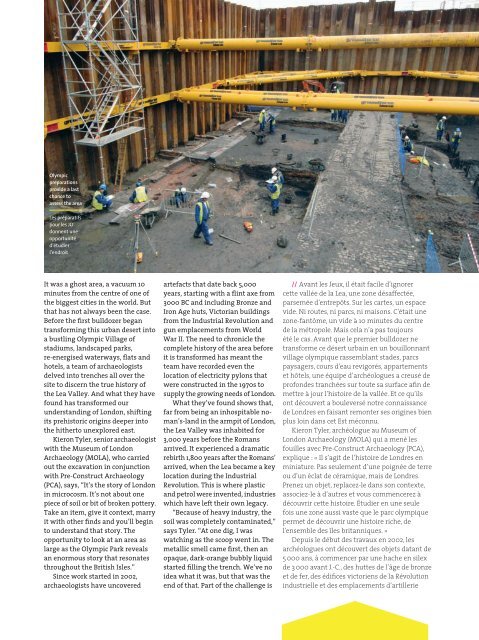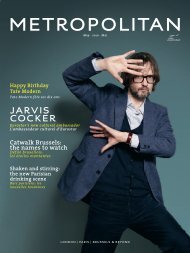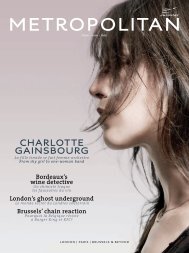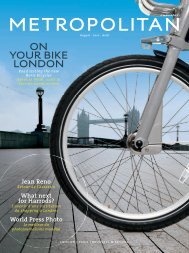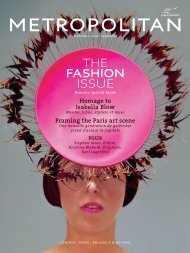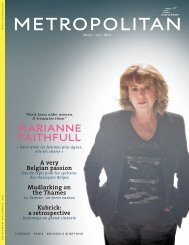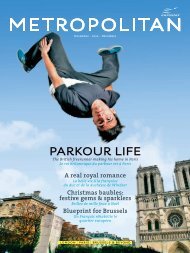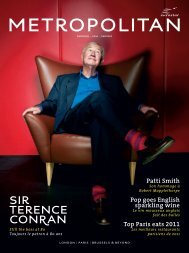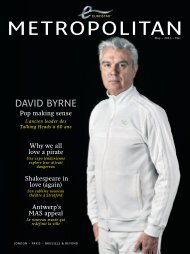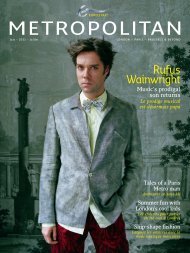july-2010
july-2010
july-2010
Create successful ePaper yourself
Turn your PDF publications into a flip-book with our unique Google optimized e-Paper software.
Olympic<br />
preparations<br />
provide a last<br />
chance to<br />
assess the area<br />
Les préparatifs<br />
pour les JO<br />
donnent une<br />
opportunité<br />
d’étudier<br />
l’endroit<br />
It was a ghost area, a vacuum 10<br />
minutes from the centre of one of<br />
the biggest cities in the world. But<br />
that has not always been the case.<br />
Before the fi rst bulldozer began<br />
transforming this urban desert into<br />
a bustling Olympic Village of<br />
stadiums, landscaped parks,<br />
re-energised waterways, fl ats and<br />
hotels, a team of archaeologists<br />
delved into trenches all over the<br />
site to discern the true history of<br />
the Lea Valley. And what they have<br />
found has transformed our<br />
understanding of London, shifting<br />
its prehistoric origins deeper into<br />
the hitherto unexplored east.<br />
Kieron Tyler, senior archaeologist<br />
with the Museum of London<br />
Archaeology (MOLA), who carried<br />
out the excavation in conjunction<br />
with Pre-Construct Archaeology<br />
(PCA), says, “It’s the story of London<br />
in microcosm. It’s not about one<br />
piece of soil or bit of broken pottery.<br />
Take an item, give it context, marry<br />
it with other fi nds and you’ll begin<br />
to understand that story. The<br />
opportunity to look at an area as<br />
large as the Olympic Park reveals<br />
an enormous story that resonates<br />
throughout the British Isles.”<br />
Since work started in 2002,<br />
archaeologists have uncovered<br />
artefacts that date back 5,000<br />
years, starting with a fl int axe from<br />
3000 BC and including Bronze and<br />
Iron Age huts, Victorian buildings<br />
from the Industrial Revolution and<br />
gun emplacements from World<br />
War II. The need to chronicle the<br />
complete history of the area before<br />
it is transformed has meant the<br />
team have recorded even the<br />
location of electricity pylons that<br />
were constructed in the 1970s to<br />
supply the growing needs of London.<br />
What they’ve found shows that,<br />
far from being an inhospitable noman’s-land<br />
in the armpit of London,<br />
the Lea Valley was inhabited for<br />
3,000 years before the Romans<br />
arrived. It experienced a dramatic<br />
rebirth 1,800 years after the Romans’<br />
arrived, when the Lea became a key<br />
location during the Industrial<br />
Revolution. This is where plastic<br />
and petrol were invented, industries<br />
which have left their own legacy.<br />
“Because of heavy industry, the<br />
soil was completely contaminated,”<br />
says Tyler. “At one dig, I was<br />
watching as the scoop went in. The<br />
metallic smell came fi rst, then an<br />
opaque, dark-orange bubbly liquid<br />
started fi lling the trench. We’ve no<br />
idea what it was, but that was the<br />
end of that. Part of the challenge is<br />
// Avant les Jeux, il était facile d’ignorer<br />
cette vallée de la Lea, une zone désaffectée,<br />
parsemée d’entrepôts. Sur les cartes, un espace<br />
vide. Ni routes, ni parcs, ni maisons. C’était une<br />
zone-fantôme, un vide à 10 minutes du centre<br />
de la métropole. Mais cela n’a pas toujours<br />
été le cas. Avant que le premier bulldozer ne<br />
transforme ce désert urbain en un bouillonnant<br />
village olympique rassemblant stades, parcs<br />
paysagers, cours d’eau revigorés, appartements<br />
et hôtels, une équipe d’archéologues a creusé de<br />
profondes tranchées sur toute sa surface afi n de<br />
mettre à jour l’histoire de la vallée. Et ce qu’ils<br />
ont découvert a bouleversé notre connaissance<br />
de Londres en faisant remonter ses origines bien<br />
plus loin dans cet Est méconnu.<br />
Kieron Tyler, archéologue au Museum of<br />
London Archaeology (MOLA) qui a mené les<br />
fouilles avec Pre-Construct Archaeology (PCA),<br />
explique : « Il s’agit de l’histoire de Londres en<br />
miniature. Pas seulement d’une poignée de terre<br />
ou d’un éclat de céramique, mais de Londres.<br />
Prenez un objet, replacez-le dans son contexte,<br />
associez-le à d’autres et vous commencerez à<br />
découvrir cette histoire. Étudier en une seule<br />
fois une zone aussi vaste que le parc olympique<br />
permet de découvrir une histoire riche, de<br />
l’ensemble des îles britanniques. »<br />
Depuis le début des travaux en 2002, les<br />
archéologues ont découvert des objets datant de<br />
5 000 ans, à commencer par une hache en silex<br />
de 3 000 avant J.-C., des huttes de l’âge de bronze<br />
et de fer, des édifi ces victoriens de la Révolution<br />
industrielle et des emplacements d’artillerie


